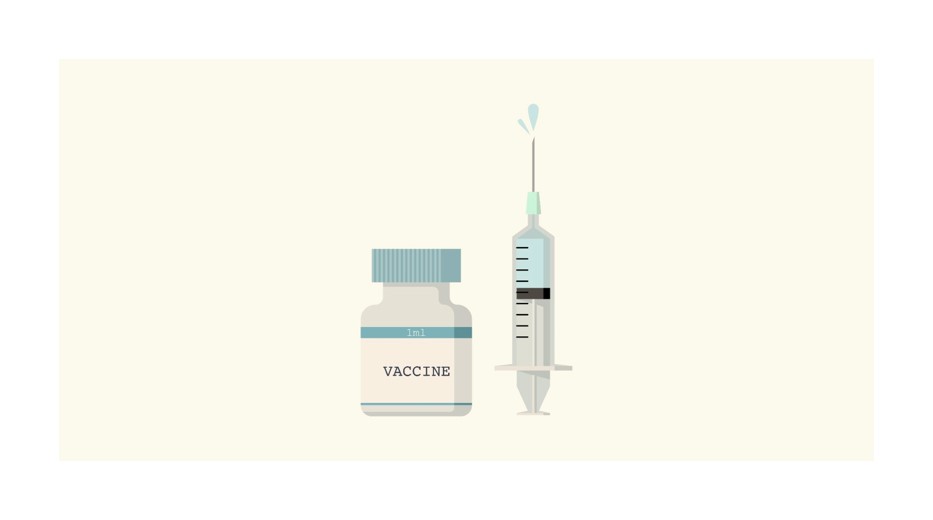Fecal Microbiota Transplant (FMT), the transfer of healthy gut bacteria from a donor to a recipient to treat a myriad of conditions, has been gaining traction rapidly in recent years. Though the human FMT market has stolen the spotlight, the animal segment is also quietly blooming as a niche area, presenting a unique business opportunity for enterprising players.
The global human FMT market, estimated at US$2.11 billion in 2023, is projected to reach US$3.15 billion by 2031 with a CAGR of 5.1% between 2023 and 2031, according to a 2023 report published by India-based market research company The Brainy Insights. The animal FMT market is undoubtedly smaller, but it is difficult to determine its exact size due to a lack of consistent data on exact use. Also, while the human segment has many players, such as UK-based Microbiotica, US-based Finch Therapeutics, and US-based Rebiotix, Inc., the animal segment has a few competitors, such as Amend Pet and AnimalBiome, both US-based companies.
This article is the first in EOS Perspectives' coverage
of Fecal Microbiota Transplantation in animals and humans.
Read our related Perspective:
Gut Matter: Will FMT Change How We Look at Disease Treatments?
Veterinary FMT is slowly but steadily growing
Increasing pet ownership is one of the most important factors influencing the growth seen in the veterinarian FMT sector. The American Pet Products Association (APPA), a Connecticut-based NPO, conducted a 2021–2022 National Pet Owners Survey, which found that 70% of US households own a pet, an increase from 56% in 1988 and 67% in 2019. A 2022 report published by HealthforAnimals, a Belgium-based global animal health association, indicated that owners are becoming more aware of their pets’ health needs. Similarly, a 2012 State of Pet Health Report released by Banfield Pet Hospital, a US-based veterinary hospital chain, has shown an increase in chronic diseases in cats and dogs.
The high incidence of diarrhea in pets also affects the FMT adoption rate. A 2008 report published in The Veterinary Record, a UK-based peer-reviewed journal, states that one of the most frequent causes of pet owners seeking veterinary care is acute diarrhea (AD).
Antibiotics are frequently used in the treatment of AD in dogs, 45% to 70%. The use of antibiotics in dogs can cause imbalances in the gut microbiota, leading to other diseases. This makes it essential to have a more holistic approach to managing pet diseases without disrupting their gut health.
The FMT sector is marred with several challenges
Though the FMT procedure offers many benefits, large-scale adoption still faces numerous challenges.
Empirical and scientific evidence is still lacking
A 2021 article published in Gut Microbes, a journal from the UK-based publishing company Taylor & Francis, indicated that the experimental information provided in preclinical FMT protocols is extremely uneven and/or lacking. The study suggested the reason for this is the lack of reliable guidelines for reporting requirements that would support efforts to replicate the study and, eventually, yield reproducible research. Many papers considered in the study lacked information on core aspects; for example, 92% had no reliable data about anaerobic conditions needed for FMT prep, and 49% had no information on efficient fecal material storage.
There is also currently minimal scientific information available in the field of veterinary FMT. Moreover, there is very little information on the therapeutic effectiveness of FMT in small animals such as dogs and cats, according to a 2016 article published in Veterinary Medicine (Auckland, N.Z.), a peer-reviewed journal. The article suggests that though adverse effects are limited in human patients, assessing whether the procedure is safe in animals is difficult.
Regulatory framework is in its infancy
Regulation is a bit complex in veterinary FMT. While there are not many specific regulations for veterinary FMT, the FDA considers FMT treatments used to prevent or treat diseases in animals as a new drug. Marketing new veterinary drugs in the USA without an approved or abbreviated new drug application is illegal. These require the manufacturer to submit information proving that a proposed generic medication is equivalent to an approved reference-listed drug (RLD) in terms of quality, safety, and efficacy. The lack of detailed clinical studies in the veterinary segment can slow down regulatory clearance. The Center of Veterinary Medicine, the US department approving drugs for pet animals, does not have any specific regulatory policy regarding the use of FMT either.
Veterinarians lack experience
Lack of technical expertise and procedural experience can also hinder FMT adoption. A 2022 study published in Topics in Companion Animal Medicine indicated that 71% of veterinarians had never performed FMT. These results were based on 155 responses from 13 different countries.
Risk of transmitting disease phenotypes is high
FMT can transmit disease phenotypes, including obesity and metabolic disorders such as diabetes, according to a 2020 study published in Medicine in Microecology, a peer-reviewed journal. Similarly, changes to the gut microbiota, such as exposure to antibiotics or the transfer of cecal material (fecal material from the bottom right quadrant of the cecum, a part of the large intestine), can affect disease phenotypes, such as an elevated risk of colitis.
Donor selection is difficult and pricey
The selection of an ideal donor is another challenge. The donor animal should be free from all kinds of parasites and pathogens and without any history of gastrointestinal diseases. Similarly, the donor should have no history of behavioral issues and should be of ideal weight. There should also be no history of antibiotic use within six months before the sample collection. Stool banks must thoroughly test the samples used for FMT, increasing procedural costs and hindering widespread acceptance and adoption of the technique among pet owners and veterinarians.

Poop to Pills Is FMT the Future of Veterinary Medicine by EOS Intelligence
Numerous investment opportunities are available for interested players
Though veterinary FMT is still in its infancy, businesses still have several investment opportunities in this sector.
Focusing on extensive R&D
Veterinary FMT is a promising sector, but more research is needed to support product and service development. Since the current competition is concentrated on rigorous R&D, interested players capable of making risky research investments will likely gain an upper hand over their competitors.
The research so far has been promising, and the extensive R&D helps drive the market and build the necessary base for FMT to be recognized as a separate category for approvals. A 2022 study published in Frontiers in Immunology, a journal of the International Union of Immunological Societies, has indicated that several studies were conducted in the field of FMT from 2001 to 2021. This study analyzed key aspects such as donor selection, efficacy, and adverse effects. The incidence of minor and serious adverse effects after an FMT procedure was found to be 11.63% and 1.59%, respectively, while the overall efficacy was 76.88%.
The results from this study are promising, but they also indicate that more research is needed to understand and confirm the efficacy, safety, and quality of FMT treatments in animals. The FDA is more likely to approve these therapies with more robust evidence from newer studies, giving market players more opportunities.
Even though there is currently a lack of consensus or evidence-based standards regarding FMT dosage or donor screening for animals, a recently established international expert organization, the Companion Animal Fecal Bank Consortium, is developing guidelines in these domains. This can also be considered as a first step towards prompting FDA approval.
Developing the oral delivery route
Market players can find opportunities in developing FMT treatments administered through oral rather than nasoesophageal or rectal routes. Currently, the FMT delivery route is one of the critical bottlenecks in the more widespread adoption of the therapy.
Both nasoesophageal and rectal delivery routes are considered more efficacious but are associated with considerable risks. Nasoesophageal treatments use endoscopes that cause discomfort and aspiration and make it difficult to assess the colon mucosa or get mucosa tissue samples. In rectal FMTs, colonoscopes and anesthesia are involved, the latter often being a significant risk to the pet patient, deterring pet owners from choosing FMT. Both rectal and nasoesophageal routes are also associated with a risk of perforation, bleeding, infection, etc.
Conversely, the oral delivery route is generally preferred due to non-invasiveness and ease of use. However, oral FMT takes longer to reach the large intestine and has been perceived as less effective.
Market players can attempt to meet the preference for the oral route by building on a few research studies showing the good efficacy of oral FMT in pets. While research on animals is still limited, research in humans can be extended to identify approaches to improved efficacy of oral FMTs in treating animal GI infections. One such research was a 2017 study published in JAMA Network Open, an open-access journal by the American Medical Association, which indicated that in humans, oral FMT had efficacy in the treatment of C. difficile infection similar to that of rectal FMT.
One of the pioneers in this area is AnimalBiome, which developed an oral Gut Restore Supplement in an enteric-coated capsule (a coating that protects the medicine from the stomach’s acidic environment before it reaches the intestine and reduces side effects). The company conducted a pilot study in 2019 to observe the impact of the capsule on 40 dogs and 72 cats suffering from IBD. The study found that symptoms improved in 83% of the cats and 80% of the dogs. As the availability of such FMT solutions is still meager, there is plenty of room in the market for businesses to follow AnimalBiome’s footsteps and invest in creating oral FMT solutions.
Driving adoption through at-home administration kits
Another growth area for players is the development of user-friendly oral at-home administration kits for more straightforward treatment requirements. There is a demand for such easy-to-administer at-home solutions in the animal FMT space, as getting the pet to a vet is typically stressful for both the animal and the owner.
A 2011 survey published in the American Veterinary Medical Association (AVMA) journal indicated that out of 2,188 dog and cat owners polled, 38% of dog owners and 58% of cat owners said their pet “hates” visiting the vet. If FMT has to be repeated or spread over multiple visits, the treatment process is also time-consuming, further decreasing the likelihood of completing the therapy.
At-home application solutions can help make significant inroads into FMT acceptance, as pet owners are more likely to opt for such treatments rather than in-hospital procedures whenever possible.
Increasing specialization and targeted treatments
Developing more target FMT treatments (specific to animal breeds or conditions) appears to be a good area of opportunity. Currently, studies are being carried out to develop farm-specific FMT to treat various conditions in cattle.
A 2022 article published in PLOS One, a peer-reviewed journal, investigated the effects of farm-specific FMT on pre-weaned calves. The study indicated that FMT-treated calves’ alpha-diversity (indicating microbiota richness) had increased. It also suggested that the success of FMT will improve with proper criteria for donor selection. This offers scope for further investigation for market players to develop such targeted therapies.
Expanding through complementary products
Players can grow their FMT business by building a range of products to complement FMT therapies, such as specialized probiotics or microbiome health supplements.
A 2015 study published in BMJ Open, an open-access medical journal, has indicated that the gut microbiome can be strengthened and balanced in humans with the help of proper diet, probiotics, prebiotics, and FMT. Researchers are now looking into the positive impact of probiotics on animal health, such as improvement in digestion, lowered risk of gastrointestinal diseases, etc. With support from such research studies, players can work to offer comprehensive treatment and maintenance product lines.
Working on awareness through educational initiatives
Apart from immediate business opportunities, players might also have to get involved in activities that inform, educate, and help build the FMT market. Though it is a promising emerging therapy, very little information is available on veterinary FMT. In order to reap long-term rewards, businesses should spotlight and promote FMT and its positive effects on animal health to the vet community and the public by launching educational drives, conferences, and other similar initiatives. Existing players already recognize this need. For instance, Amend Pet, a major company in the veterinary FMT segment, has free educational courses in the form of RACE (Registry of Approved Continuing Education)-approved videos for veterinarians.
Increasing adoption through collaborations
Further, players in the FMT space should collaborate with veterinary hospitals and other organizations dealing with animal health to work with them and increase FMT adoption.
An example of this is the strategic collaboration between Amend Pet and the Association of Shelter Veterinarians (ASV) that started in May 2023. With this partnership, Amend Pet plans to offer easy-to-use and affordable FMT treatments to shelter dogs. The ASV has over 2000 veterinary professionals and 23 student chapters worldwide. Partnerships such as this can be expected to raise awareness about FMT among the public and veterinary sector, leading to improved adoption rates.
EOS Perspective
While veterinary FMT still has a long way to go before becoming a mainstream therapy, it is already an exciting field with many expected developments.
The spectrum of animal health conditions that can be treated or managed with FMT will continue to expand to include immune system disorders, metabolic conditions, and behavioral issues. Progress in the animal FMT space will likely be linked to research done in human FMT, as these studies can be extended to animal healthcare or at least be a starting point for animal FMT-specific research, revolutionizing veterinary treatments.
Improvements in donor selection processes, such as more stringent and advanced inspection of the donor’s gut microbial diversity and behavior evaluation, can be expected as many studies are now being done to understand the connection between behavior and gut microbes.
Rapid technological development, especially in AI, is expected to influence veterinary FMT as well. AI-powered equipment might be used for guided rectal FMT treatments to improve the procedures’ accuracy. This is likely to be safer for the animal and can prompt pet owners to choose FMT to treat their pet’s gastrointestinal issues. Companies investing in research can expect growth in this field.
All these developments, if accompanied by simultaneous partnerships between industry players and veterinary clinics, offer a promising future for the animal health FMT. The return on investment in this sector might not be immediate. For now, the industry needs to prioritize driving adoption, educating and disseminating knowledge, and gathering scientific data and empirical evidence to build a sound understanding of FMT in veterinarians, pet owners, and regulatory bodies. Nonetheless, the industry prospects are promising, and the players can expect the long-term benefits to be substantial.
















